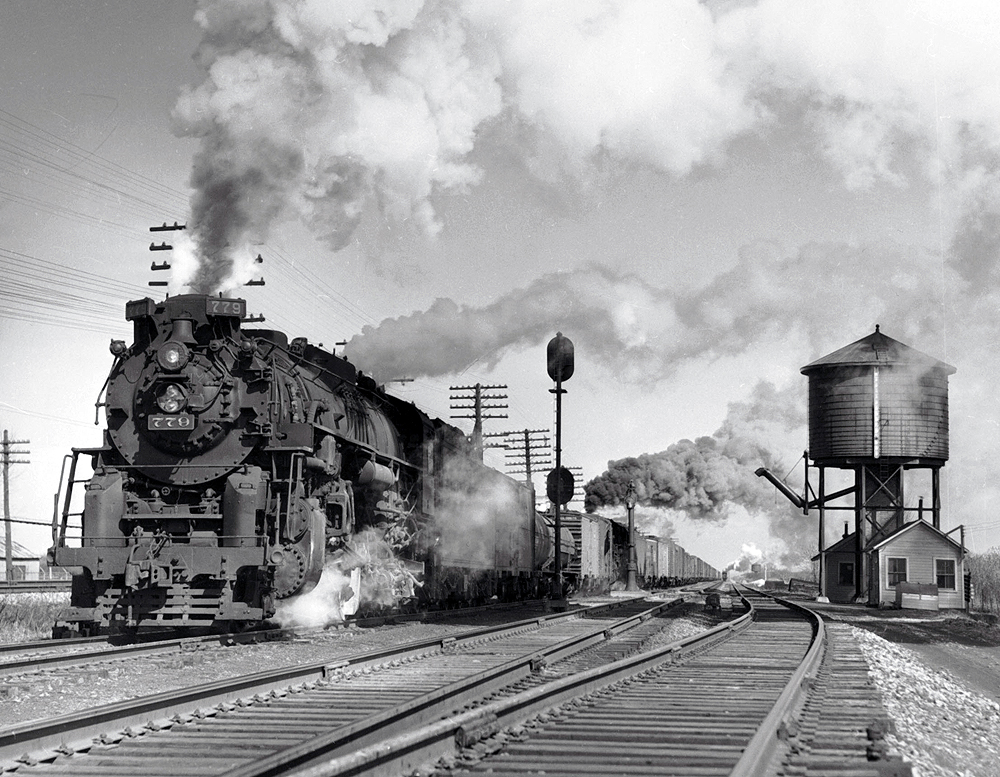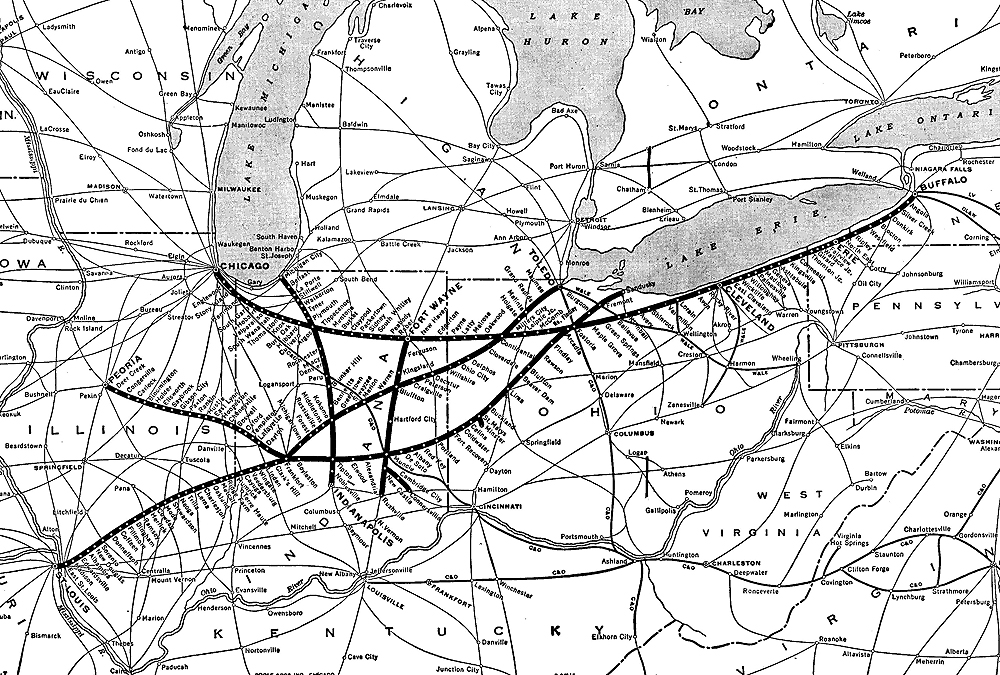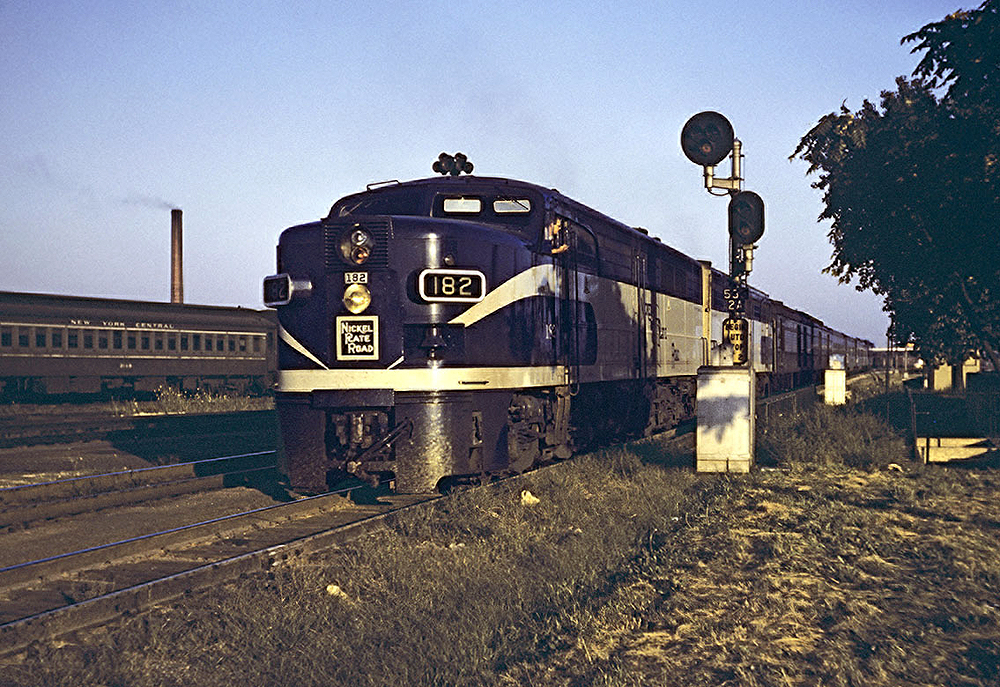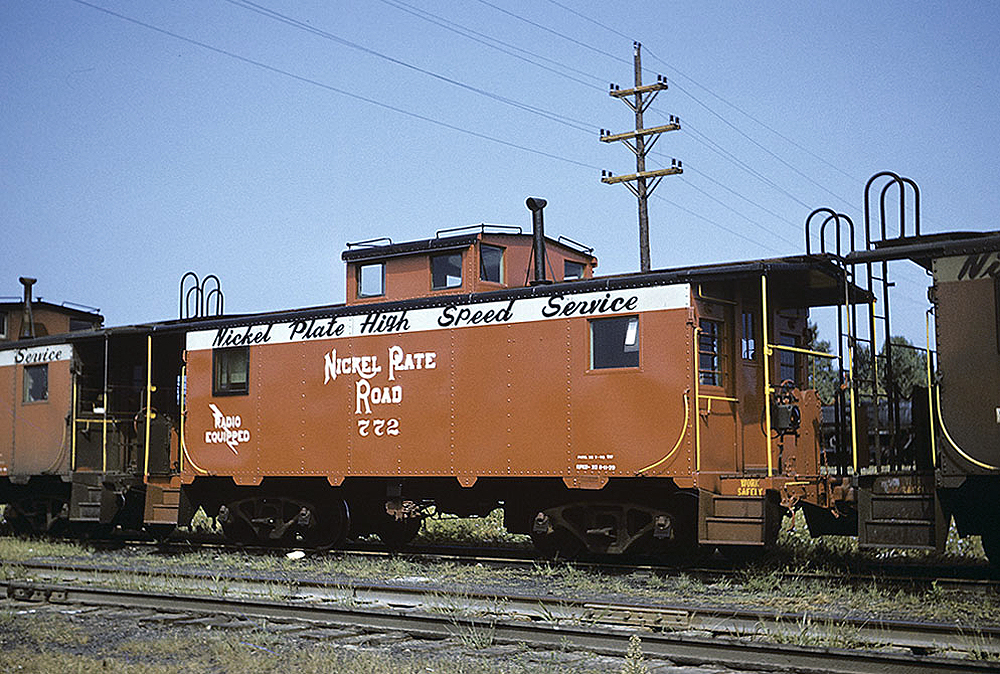History and major events of the Nickel Plate Road
The New York, Chicago & St. Louis opened between Buffalo and Chicago on October 23, 1882, in many spots east of Cleveland just a stone’s throw from rival Lake Shore & Michigan Southern Railway. What would become the Nickel Plate became a Vanderbilt property in January 1883.
Although eclipsed by the Lake Shore’s plush limiteds, NYC&StL from 1893 fielded three unpretentious, reliable Chicago to Buffalo, N.Y., passenger trains, establishing a long-standing pattern of modest passenger service. In 1897, Delaware, Lackawanna & Western entered the picture, conveying NYC&StL cars from Buffalo to Hoboken, N.J.
“The great . . . Nickel-plated railroad”
When NYC&StL was being surveyed, Editor F. R. Loomis of Ohio’s Norwalk Chronicle waxed enthusiastically on the railroad coming to town referring to it as “the great New York and St. Louis double-track, nickel-plated railroad.” Use of “Nickel Plate Road” proliferated, in newspapers and by the road itself.
In 1914, LS&MS and Nickel Plate were wards of New York Central. Passage of the Clayton Act that same year was intended to bolster the earlier Sherman Antitrust Act, and left NYC with a dilemma. Enter brothers Oris P. and Mantis J. Van Sweringen, self-made Cleveland real-estate developers who purchased acreage from NYC Vice President Alfred H. Smith. “The Vans” as the brothers were known, approached Smith, by then NYC president, to discuss their plans involving land owned by the Nickel Plate. As the Clayton Act’s divestiture deadline loomed, Smith engineered a sale to the Vans of not only the land they sought, but of the entire Nickel Plate Road. Their Alleghany Corporation holding company eventually included control of the Nickel Plate, Chesapeake & Ohio, Pere Marquette, Erie, Wheeling & Lake Erie, Chicago & Eastern Illinois, and Missouri Pacific.
The gaunt NYC&StL was ripe for re-equipping under its new owners. Addressing the Vans’ lack of railroad experience, Smith orchestrated John J. Bernet’s move from an NYC vice-presidency to be Nickel Plate’s president. Neglected physical plant and obsolete motive power received needed attention under Bernet, who reincarnated the road into a lean and aggressive contender.
Expansion in the 1920s
Acquisition of two roads in 1922 and 1923 tripled Nickel Plate’s mileage. The first was a homecoming, of sorts, when 713-mile Lake Erie & Western, by this time reaching Peoria, Illinois, and Indianapolis, was merged. The second permitted Nickel Plate to finally make good on its “St. Louis” claim, as it bought the 450-mile Toledo, St. Louis & Western (the “Clover Leaf Route”), a former narrow-gauge linking Toledo and East St. Louis with a half-interest (with Grand Trunk Western) in 48-mile Detroit & Toledo Shore Line. Around this time, NYC&StL adopted “Nickel Plate” as its reporting marks.
The Advisory Mechanical Committee, formed by C&O, Nickel Plate, Erie, and Pere Marquette in 1929, acted as a clearing house to develop and implement equipment specifications and designs. AMC’s first project was C&O’s T-1 2-10-4 of 1930, followed by the first of Nickel Plate’s legendary 2-8-4 Berkshires in 1934. The “Berks” enabled Nickel Plate to surmount much of the 1930s economic adversity and find its calling as a high-speed conveyor of overhead freight. Nickel Plate would order 80 of the AMC-designed 2-8-4s.
Following the Vans’ deaths, financier Robert R. Young gained control of Alleghany Corp. in 1937. Under his charismatic direction, C&O gained stock control of Nickel Plate in December 1937. Young’s abortive attempt to consolidate C&O, Nickel Plate, Wheeling & Lake Erie, and Pere Marquette in 1945 led to C&O relinquishing Nickel Plate control in November 1947. The Interstate Commerce Commission then authorized Nickel Plate to acquire all of C&O’s holdings in the 506-mile W&LE. Rich in coal and ore traffic, “the Wheeling” was leased by Nickel Plate Road in December 1949.
Diesels come to the Nickel Plate
Diesels — Alco and EMD switchers — arrived in 1942, but Nickel Plate stayed committed to Super Power steam out on the road, as 2-8-4s replaced 2-8-2s and smaller power. An order for four long-delayed Electro-Motive BL1 road-switchers was canceled in July 1947; also that month, 11 Alco PA1s were ordered for passenger service, replacing 4-6-2s and 4-6-4s. With 25 C&O GP7s leased to expedite dieselization, Nickel Plate’s last mainline revenue steam run occurred on July 2, 1958, behind Berkshire 746; 0-8-0 212 closed out all steam in the Conneaut, Ohio, yard on July 18, 1959.
Nickel Plate owned 440 diesel electric locomotives, all black with yellow stripes except the PA “Bluebirds.” EMD, Alco, FM, Baldwin, Lima, and GE all were represented. GP7s, GP9s, RS3s, and RS11s dominated road service, with six-motor RSD12s and SD9s hauling mineral traffic on the Wheeling. The second generation began in 1962 when the PAs went to Alco toward 11 RS36s, 2 for passenger service (joining 9 1956 GP9s). Ten GP30s and solitary GP35 and C420 wreck-replacement units finished Nickel Plate’s diesel purchases.
Merger with Norfolk & Western
After fending off advances from new majority shareholder and key eastern connection Delaware, Lackawanna & Western in the mid-1950s, Nickel Plate began merger talks with the Norfolk & Western.
Fresh from its 1959 Virginian acquisition, the N&W was eager to grow, and Nickel Plate and N&W was in part a reaction to the New York Central and Pennsylvania talks then under way. The merger plan presented to the Interstate Commerce Commission in March 1961 was approved in June 1964. It called for N&W (as the surviving entity) to merge with Nickel Plate, acquire control of Pittsburgh & West Virginia, and lease the Akron, Canton & Youngstown and the PRR-controlled Wabash to create a 7,800-mile system. Purchase of PRR’s Columbus to Sandusky, Ohio, line was included to link N&W with Nickel Plate (at Bellevue, Ohio) and thus the other partners. Merger day was October 16, 1964.
Various portions of Nickel Plate subsequently were downgraded, sold, or abandoned, but the Buffalo–Chicago trunk remained a vital link in N&W’s (after 1982, Norfolk Southern’s) network.


















I was a state trooper in 1959+ stationed in Ashtabula,Ohio. Conneaut is in Ashtabula County. Saw the end of steam mostly switchers in Conneaut. Also saw berks in 1959 although all the reports say they stopped in 1958. I remember blue-bird PA-1’s stopping in Ashtabula for passengers usually with only an A-unit in charge.
As a boy, I remember taking the New York Central to Painesville to visit my grandparents and cousins in Fairport Harbor, OH. I remember seeing the Nickel Plate Bluebirds hauling passenger trains on the line parrellel to the Central west of Buffalo..
Never saw any of their trains, even though St. Louis was part of their name. But have rode with #765 a couple of times, including the Joliet Rocket 2017. Have friends who volunteer with Ft Wayne RR and am very familiar with the name.
The NKP is probably my favorite RR as it passed within sight of our house in Painesville, OH. The most amazing sight I recall was seeing the UP Big Boy being towed enroute to Steamtown way back in the ’60’s. My family also rode the NKP on occasion behind their iconic Alco PAs to visit relatives in western Ohio.